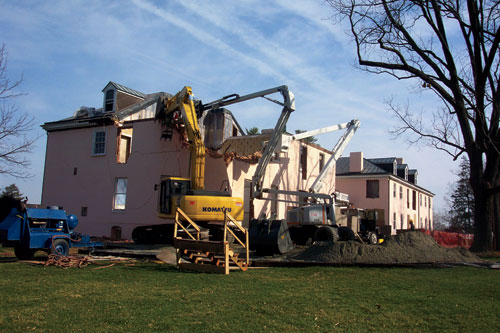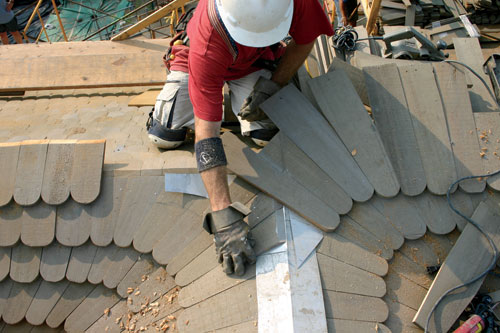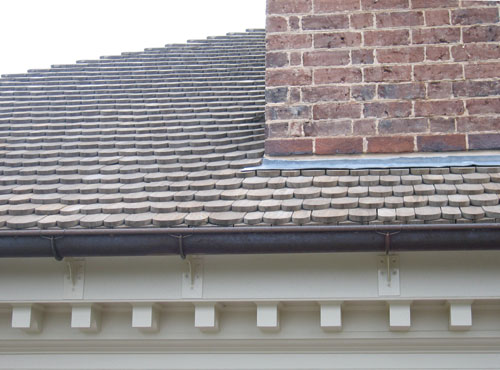Montpelier's Shrunken State Is Fit for a President
 |
The DuPont additions, two thirds of the 36,000-square-foot, prerestoration mansion, were carefully deconstructed (above), with elements re-created in exhibits at Montpelier's adjacent visitor center. Photo courtesy The Montpelier Foundation |
Â
The practical-minded Madison drew the line, though, on some of his presidential predecessor's suggestions. When Jefferson advised lifting the floor above the drawing room to accommodate a semicircular window over the main entrance, Madison opted for a smaller, elliptical window, keeping the floor as it was. "The house is a great autobiography of the man," Jeanes says. "He was a pragmatic, smart guy. The same sensibility he brought to the Constitution, he brought to building his house. Visitors can see that now without the later architecture clouding it."Â
 |
 |
Each of the 30,000 reproduced Madison-era roof shingles, made from old-growth cypress, were hand-scalloped to match the originals. Top photo courtesy The Montpelier Foundation;
bottom photo courtesy Josephine Minutillo |
Â
Madison's correspondence with Jefferson was one of the many tools restorers used to connect the dots during the restoration process.   Madison also kept meticulous building records, documenting all of his building-supply purchases. (In one telling anecdote, the restoration team eventually located 3 feet of wood that was accounted for in Madison's records when they found a door opening that had been filled: The missing wood formed the lintel.) Restorers also referred to early lithographs and paintings of the house, always confirming what was illustrated with archaeological or other evidence in case the creator of the image had taken artistic license. For instance, a well-known watercolor depicted a dark-colored, or "invisible," fence around the house, rather uncommon for that time. The charred remains of the pales, or pickets, were found in holes in the ground, verifying the type, location, and paint color of the fence, as well as the species of wood used (white oak and walnut).
 |
Exterior restoration began by stripping off stucco that had been applied over the outer brick walls about 1855, and again in the 20th century. Photo courtesy The Montpelier Foundation |









